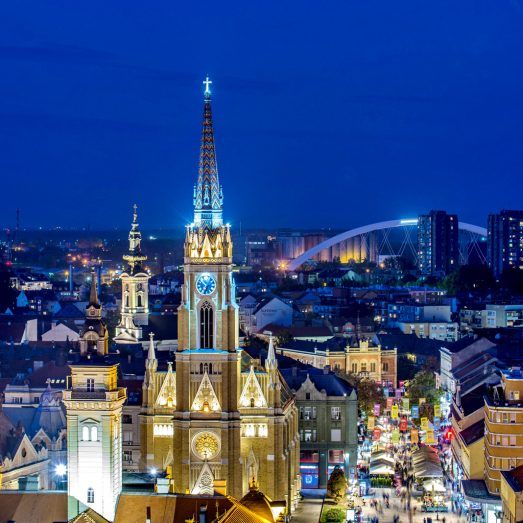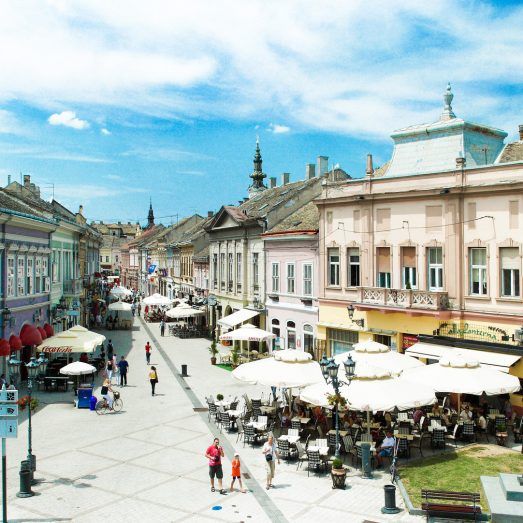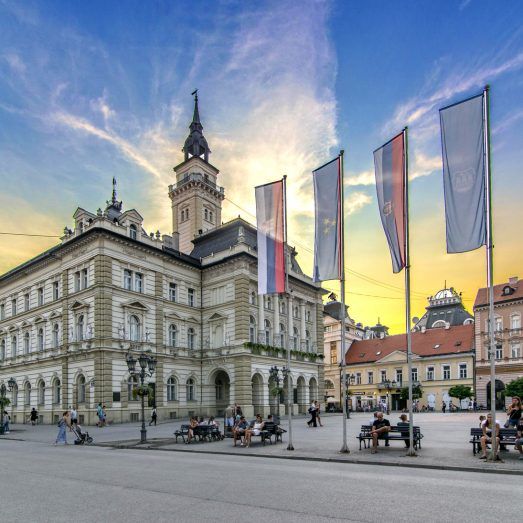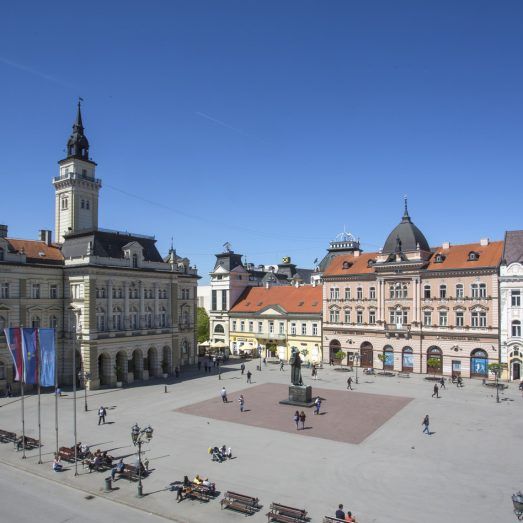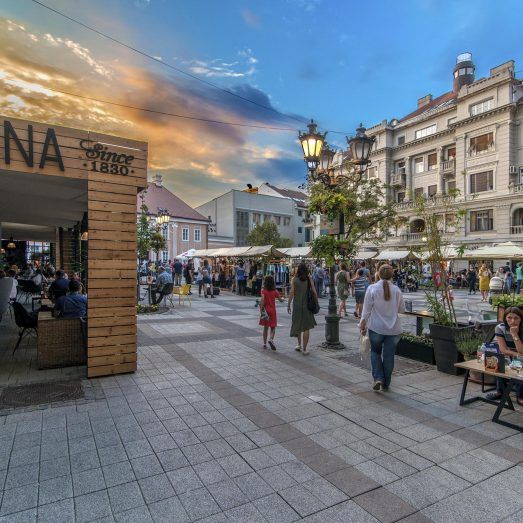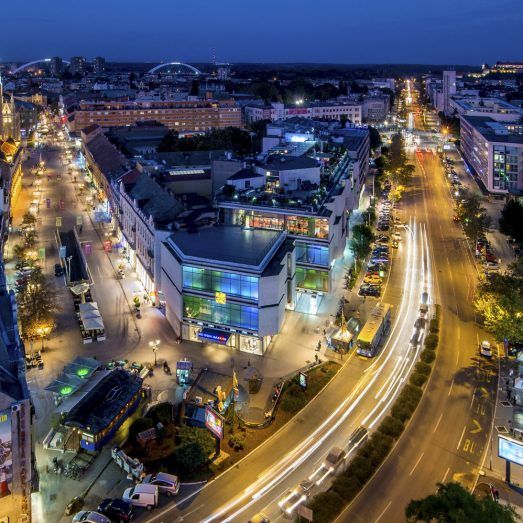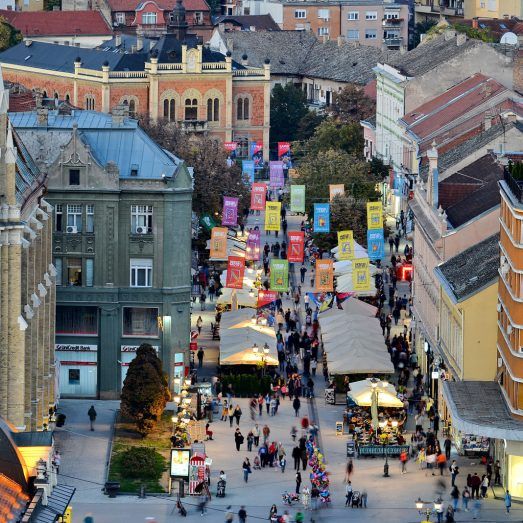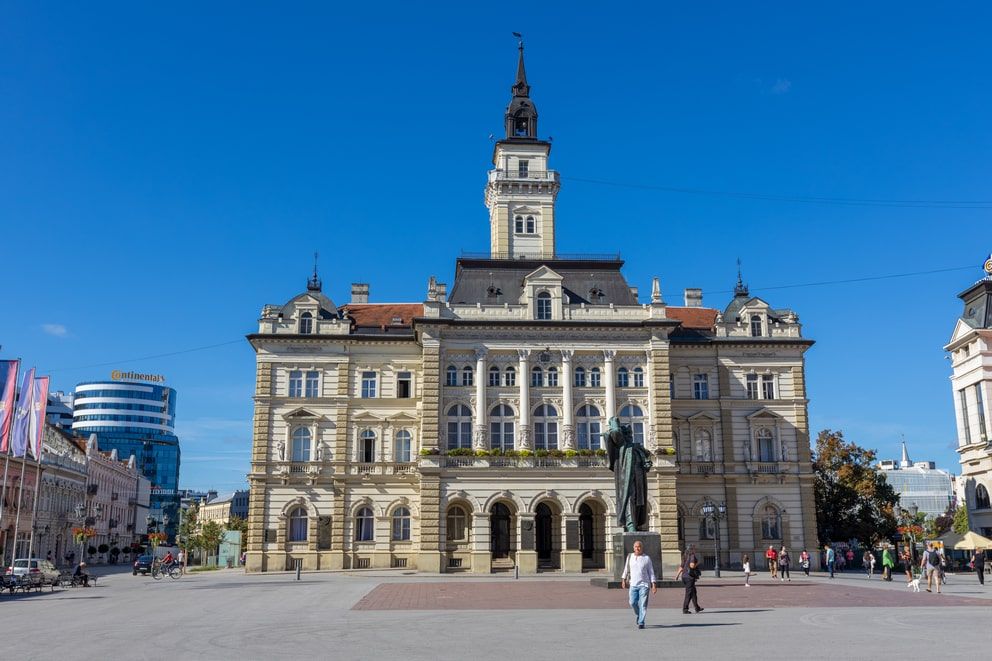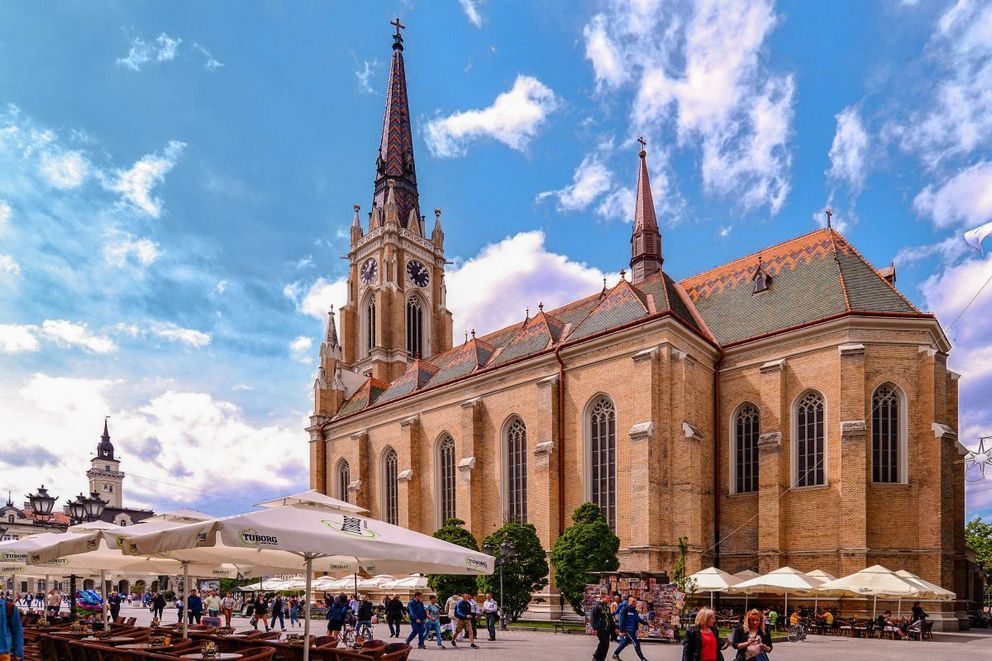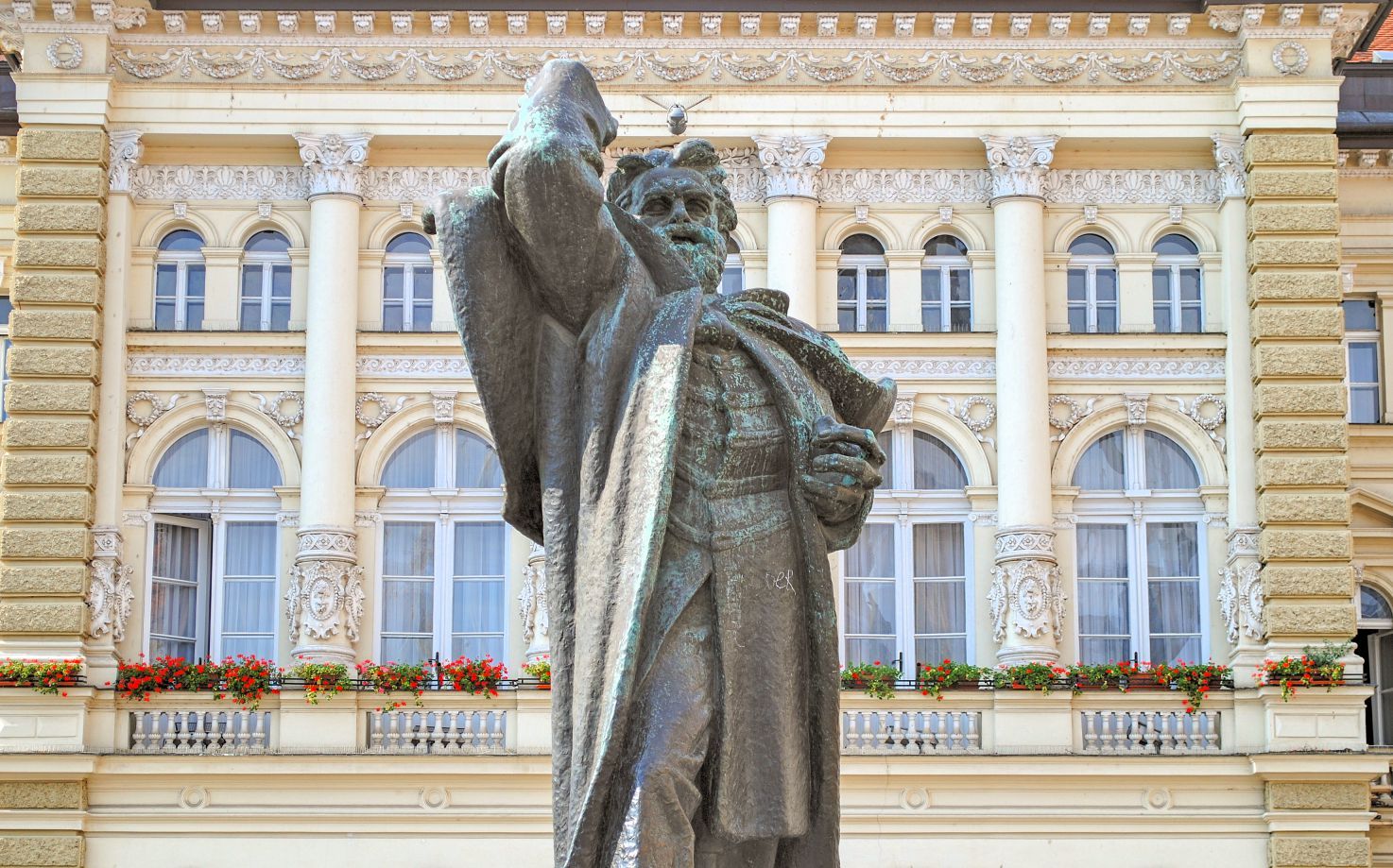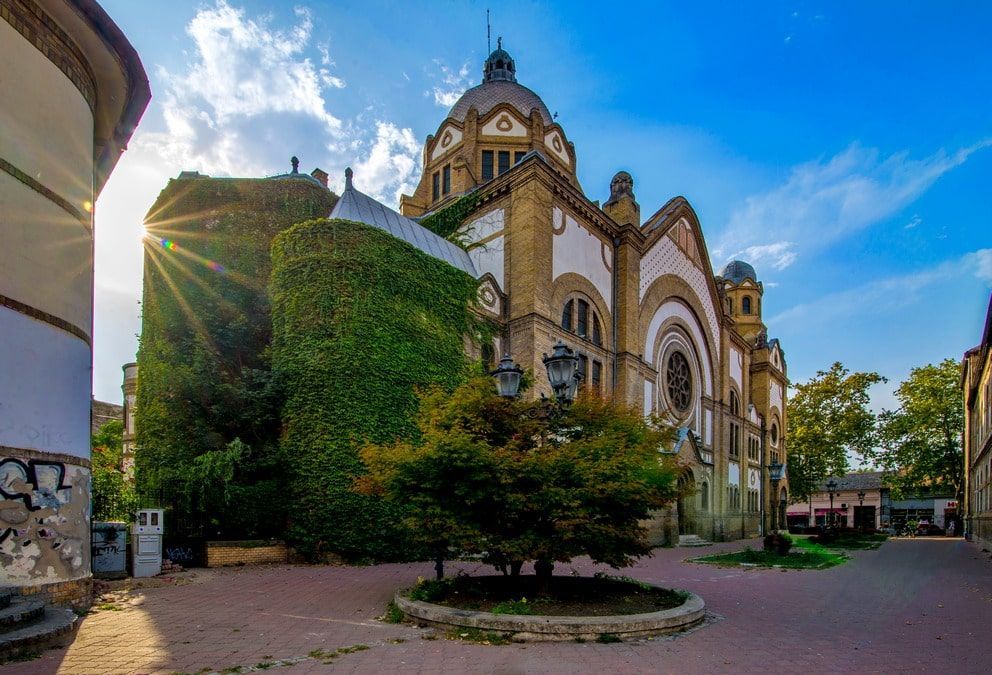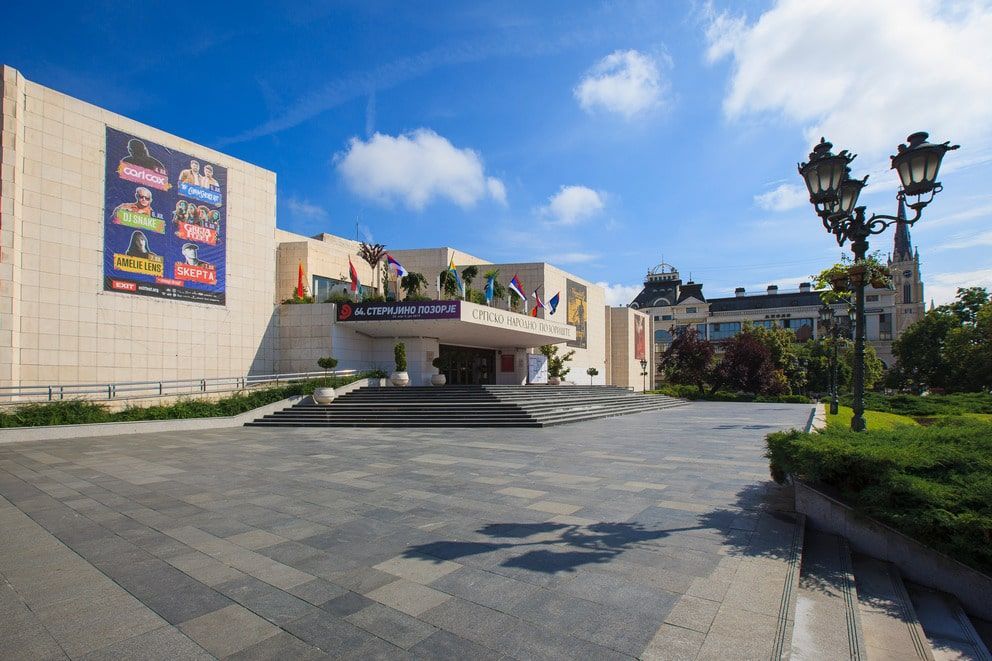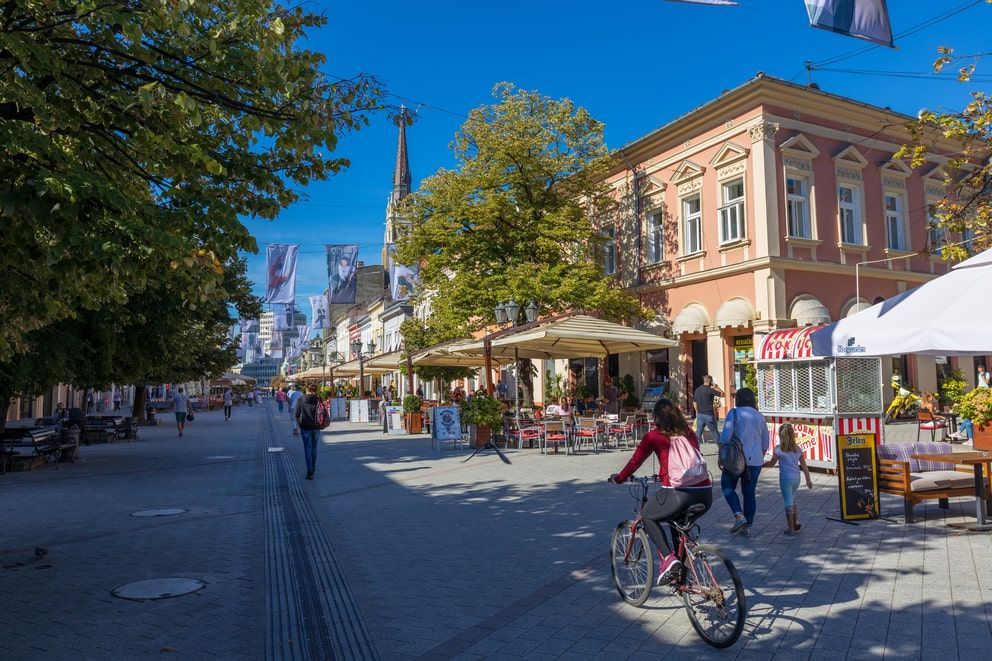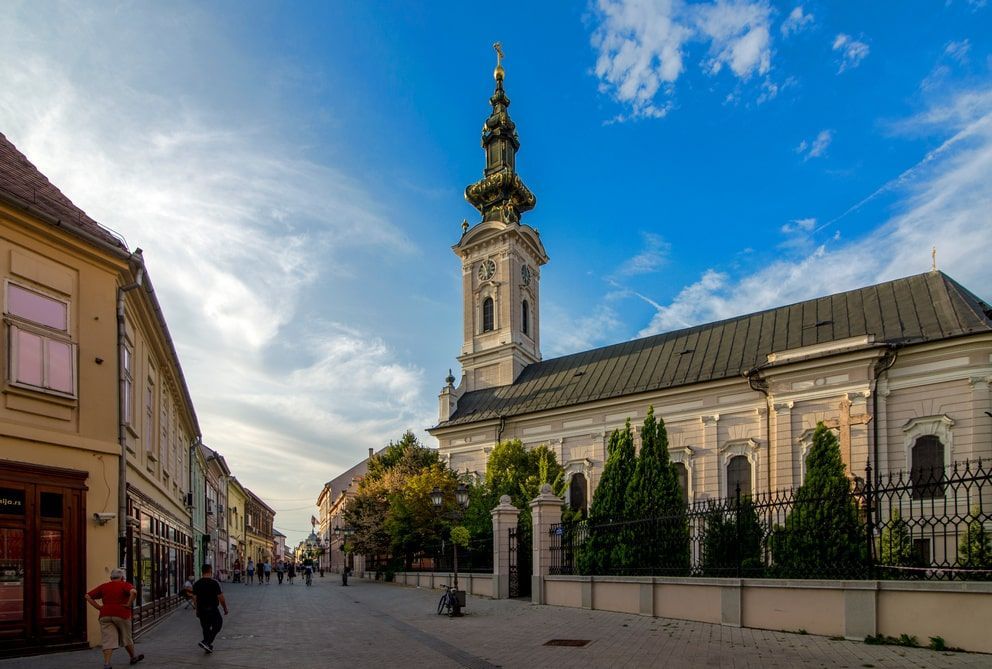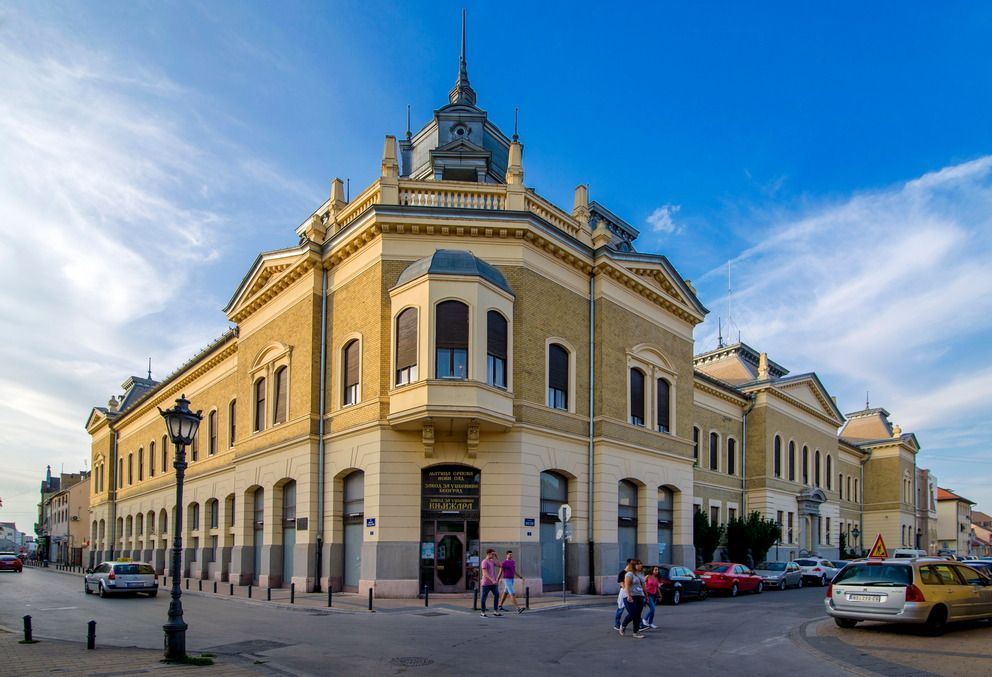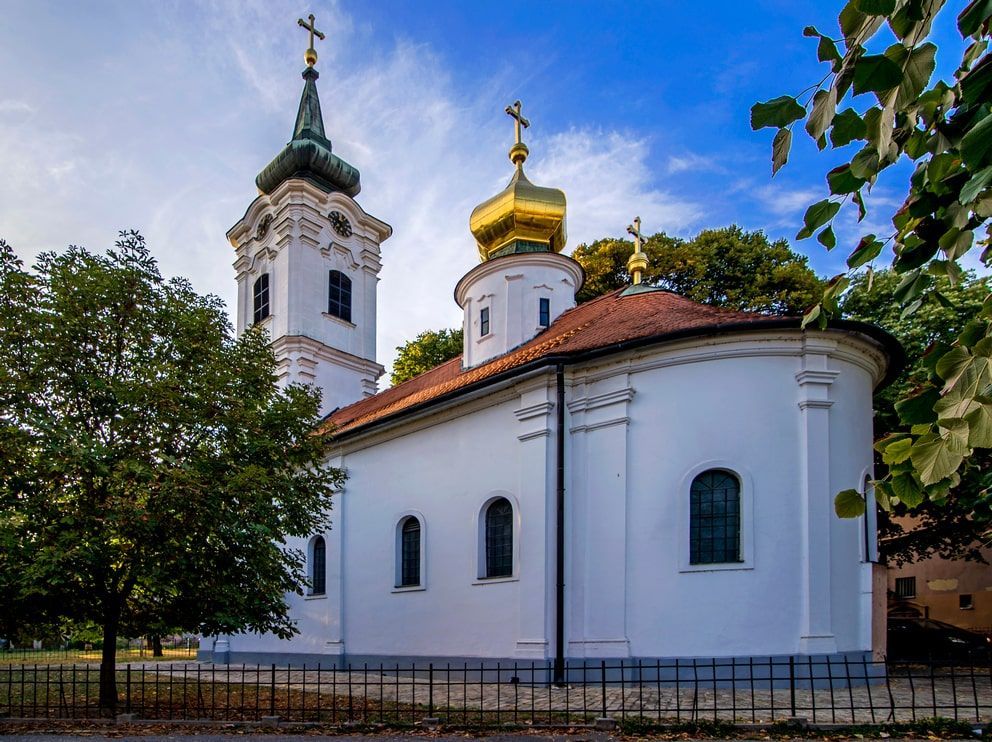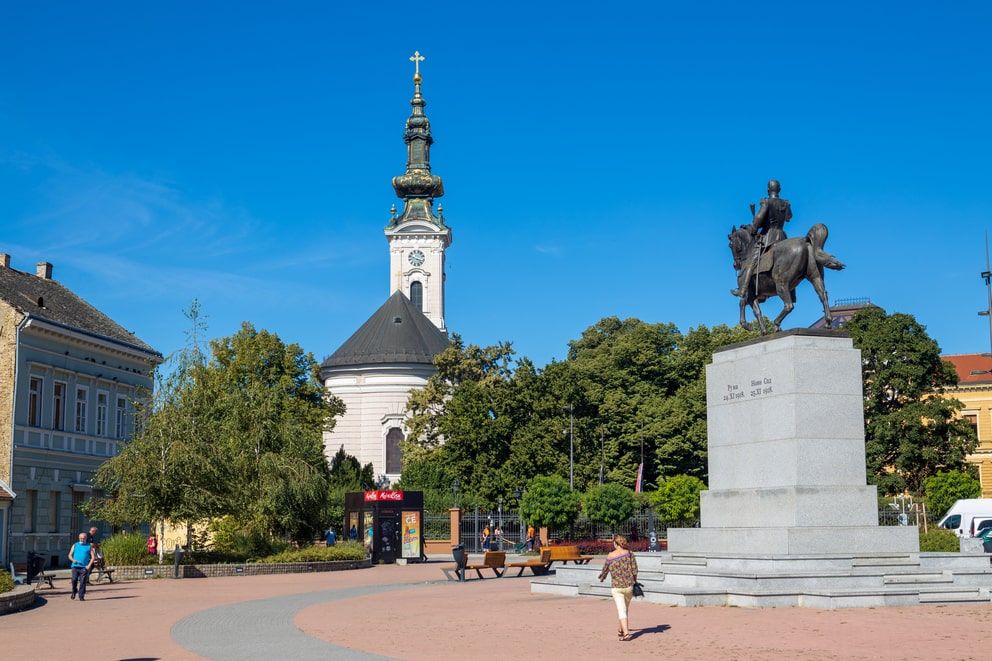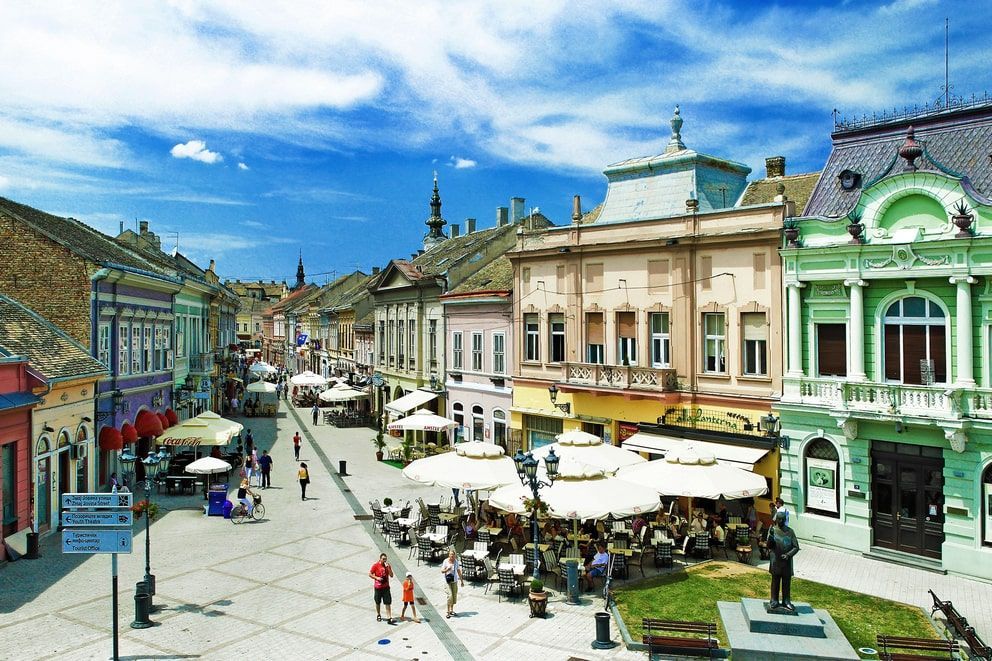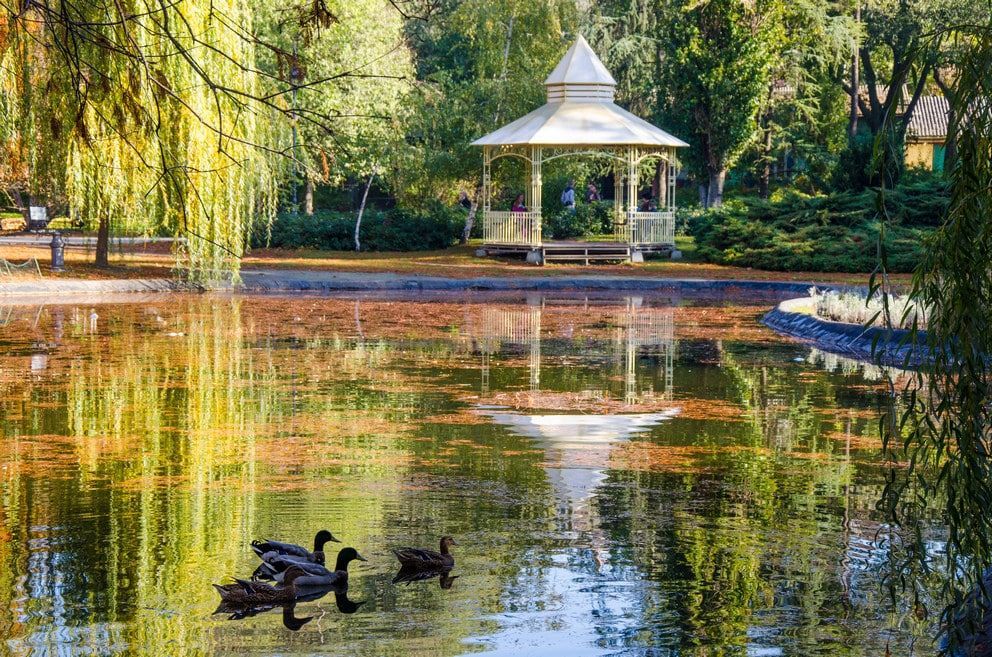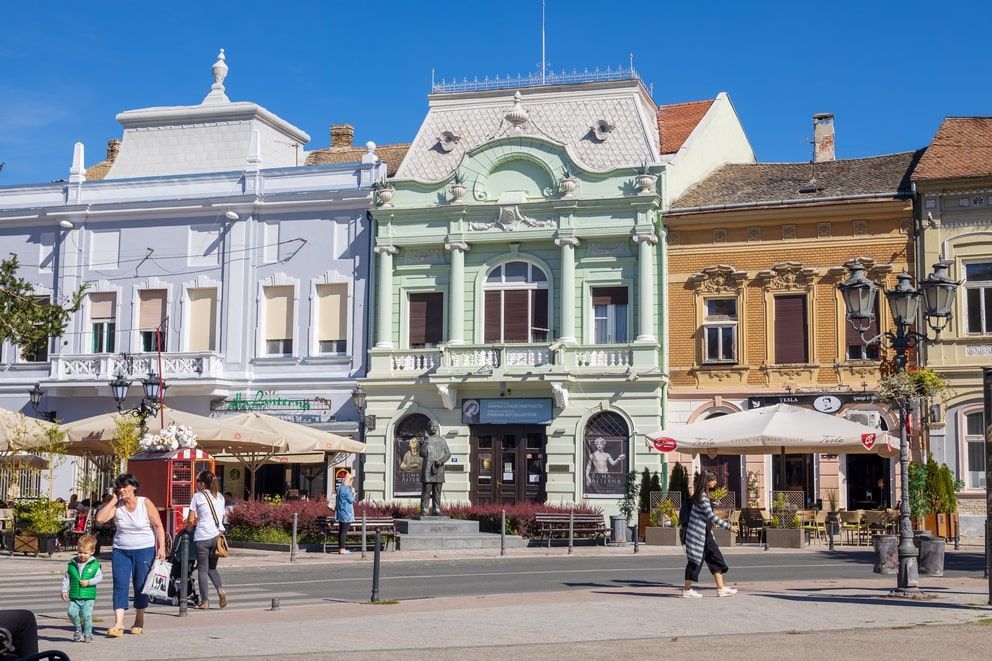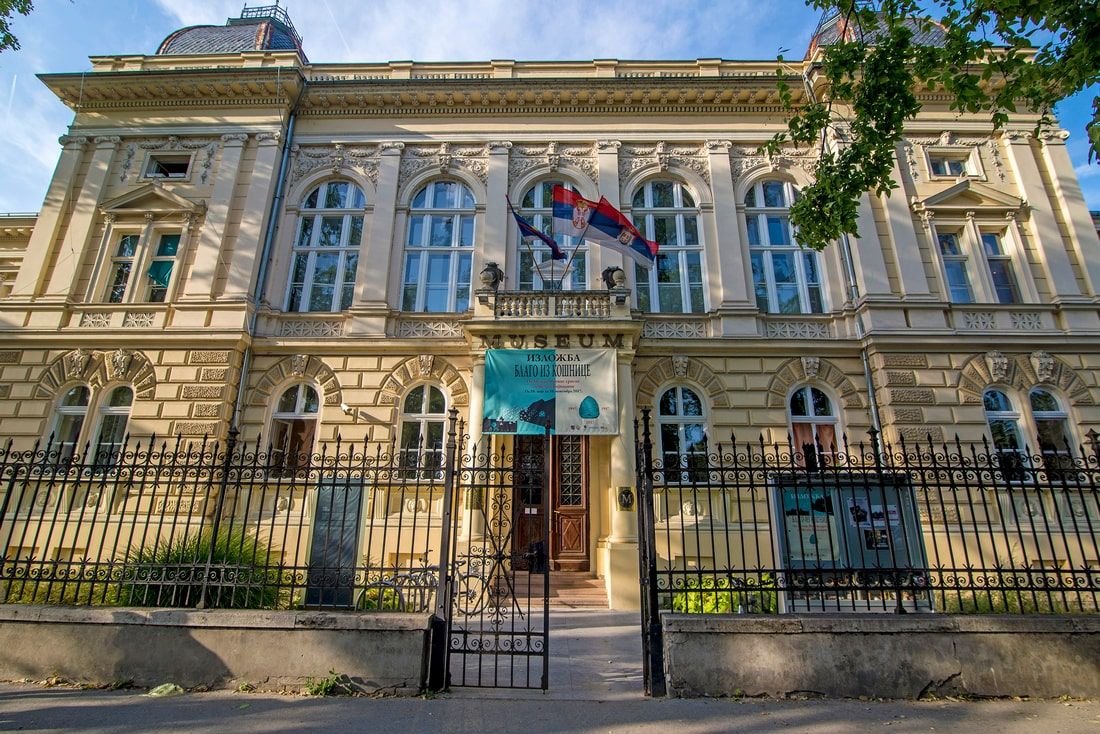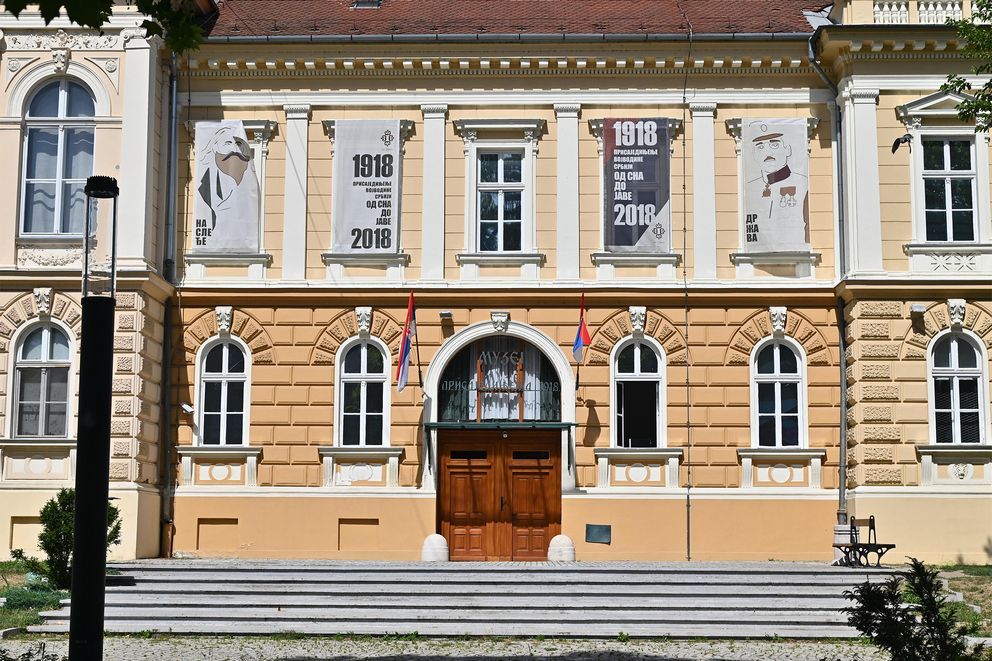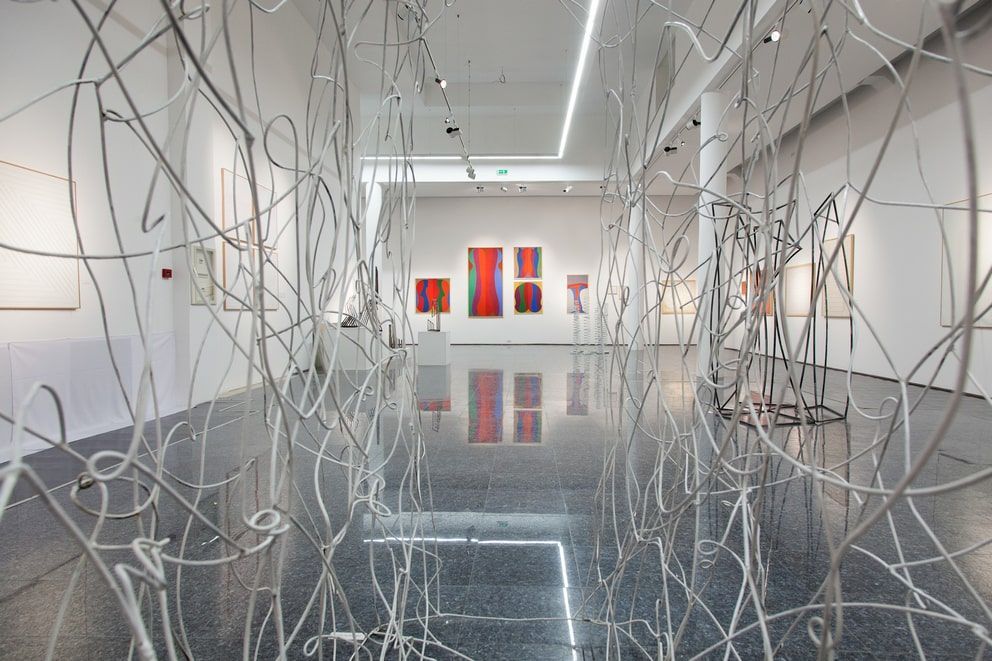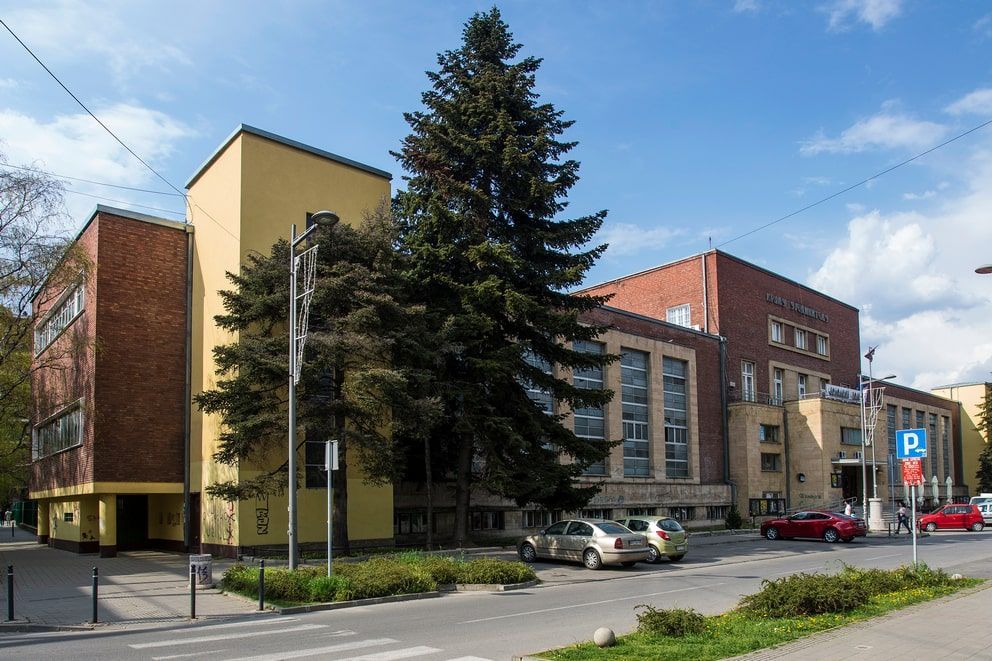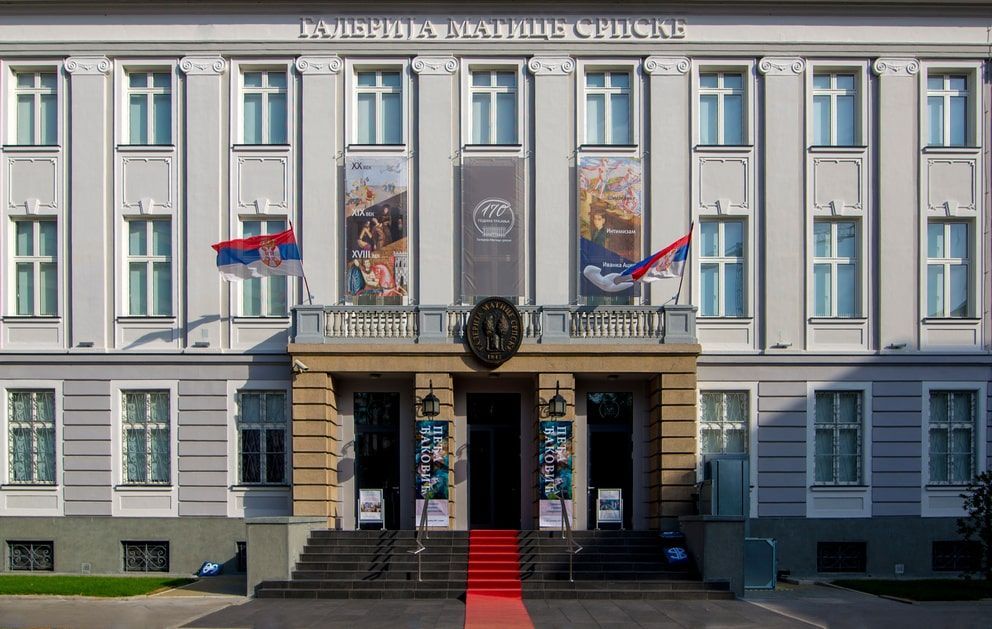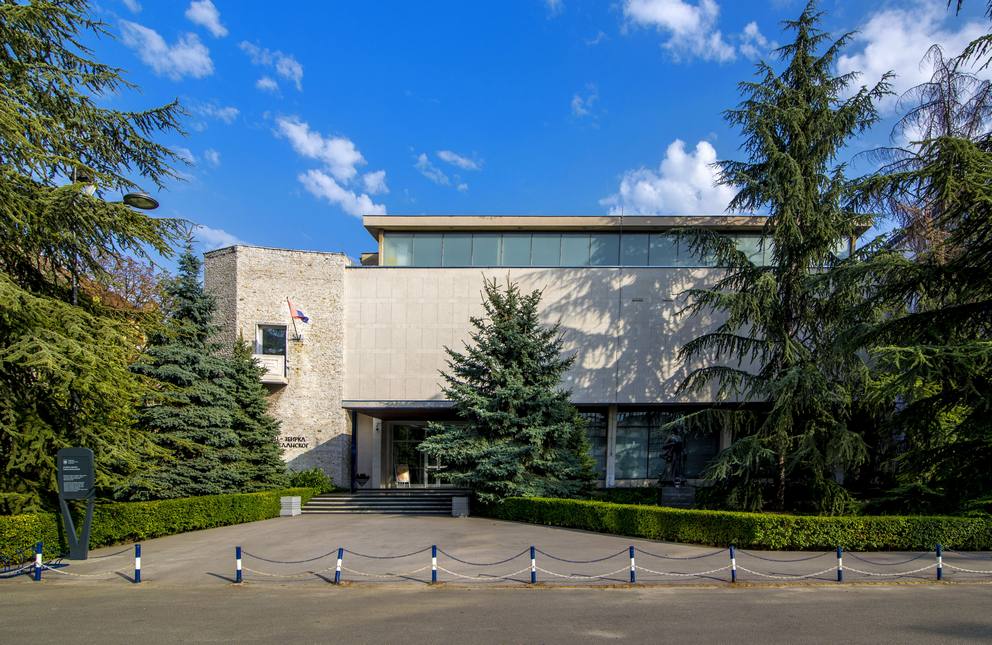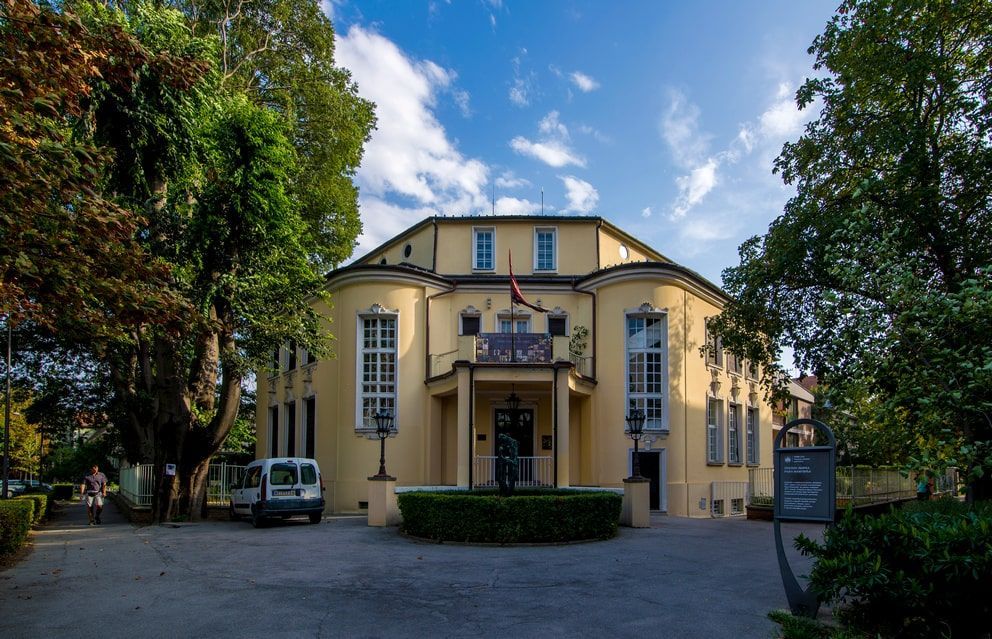The entire central zone of Novi Sad – Liberty Square, Zmaj Jovina Street, Dunavska Street and the streets in their surroundings – is a kind of exhibition space, a collage of architectural styles and realized ideas of foreign and domestic architects and builders that attract the eye of all visitors. At the turn of the 17th and 18th centuries, the center of the town was at the end of the Zmaj Jovina Street, as it is known today, where the old Bishop’s Palace – Vladičanski dvor – was built as early as 1741. Already during the first half of the 18th century, the center moved along today’s Zmaj Jovina Street until it stopped at the Liberty Square – Trg Slobode.
Liberty Square gives the city center its recognizable modern look with its most important buildings, the City Hall (1994) and the Roman Catholic Name of Mary Church (1895), designed by György Molnár. An architectural gem that unobtrusively adorns the Churchyard – Katolička porta – is the Roman Catholic Parish Office Building – Plebanija (1808). Next to the Name of Mary Church, and partly in the Churchyard, lies the residential and commercial Ironman Palace – Gvozdeni čovek (1909), one of the architectural symbols of Novi Sad. The area of Liberty Square is defined by several other buildings as well. The palace which leans onto Njegoševa Street was built according to the design of Lipót Baumhorn in 1907 for the needs of the Savings Bank of the Novi Sad Catholic Community in the Art Nouveau style and the adjacent one was built in 1893 as the Grand Hotel “Majer” by an unknown designer in the Neo-Baroque style. Opposite these buildings on the square is the building of the Vojvodina Hotel originally built as the Jelisaveta Hotel in 1854, in the classicist style. The space of the Liberty Square is also defined by the Tanurdžić Palace, completed in 1936 according to the design of Đorđe Tabaković.
The architectural oeuvre of Vladimir Nikolic, considered by many to be one of the greatest Serbian architects at the turn of the 19th and 20th centuries, gave a recognizable appearance to the end of Zmaj Jovina Street. There are the Bishop’s Palace – Vladičanski dvor (1901), one of the most representative images of the city and the Building of the Great Serbian Orthodox High School (1900), today the Jovan Jovanović Zmaj High School. Right next to Bishop’s Palace is the Serbian Orthodox Church of St. George, last renovated in 1905 by Milan Michal Harminc. Nearby are the oldest preserved houses in the city: “At the White Lion” (around 1720) and Raletić’s Palace (1751).
The wandering eye of the traveler is always drawn to the striking complex of the Synagogue with the buildings of the Jewish Municipality and the Jewish School, built in 1909. The Novi Sad Synagogue is one of the largest in this part of Europe, designed in the Art Nouveau style by Lipót Baumhorn.
The two monumental buildings, seats of the Government and the Assembly of the Autonomous Province of Vojvodina, will impress the visitor with the whiteness of their marble facade. Also known as the Banovina Palace (1939), it was designed by Dragiša Brašovan, considered one of the greatest names of Serbian architecture in the period between the two world wars.
